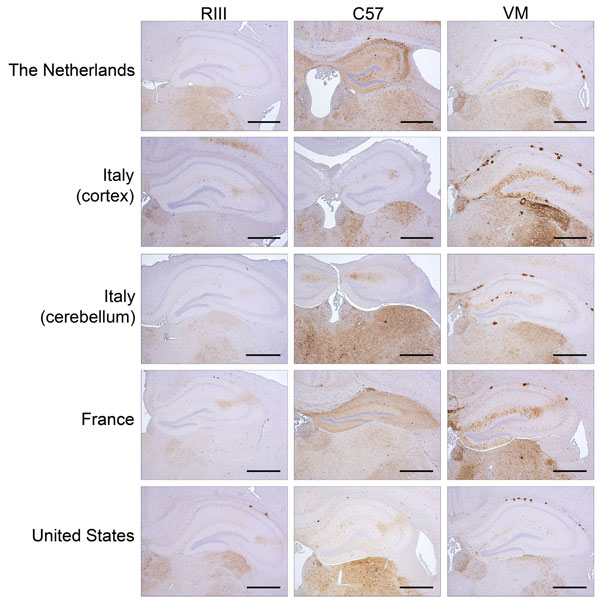Volume 18, Number 10—October 2012
Research
Constant Transmission Properties of Variant Creutzfeldt-Jakob Disease in 5 Countries
Figure 3

Figure 3. . Immunohistochemical detection of abnormal prion protein (PrPSc) in the hippocampus and thalamus of RIII, C57, and VM wild-type mice after inoculation with variant Creutzfeldt-Jakob disease brain tissue. Scale bars = 500 µm. The anti–prion protein detection antibody used was 6H4.
1Joint senior authors.
Page created: September 19, 2012
Page updated: September 19, 2012
Page reviewed: September 19, 2012
The conclusions, findings, and opinions expressed by authors contributing to this journal do not necessarily reflect the official position of the U.S. Department of Health and Human Services, the Public Health Service, the Centers for Disease Control and Prevention, or the authors' affiliated institutions. Use of trade names is for identification only and does not imply endorsement by any of the groups named above.